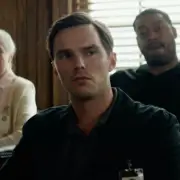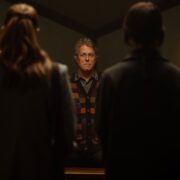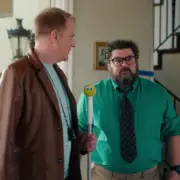GREEN BORDER: Intention Versus Execution
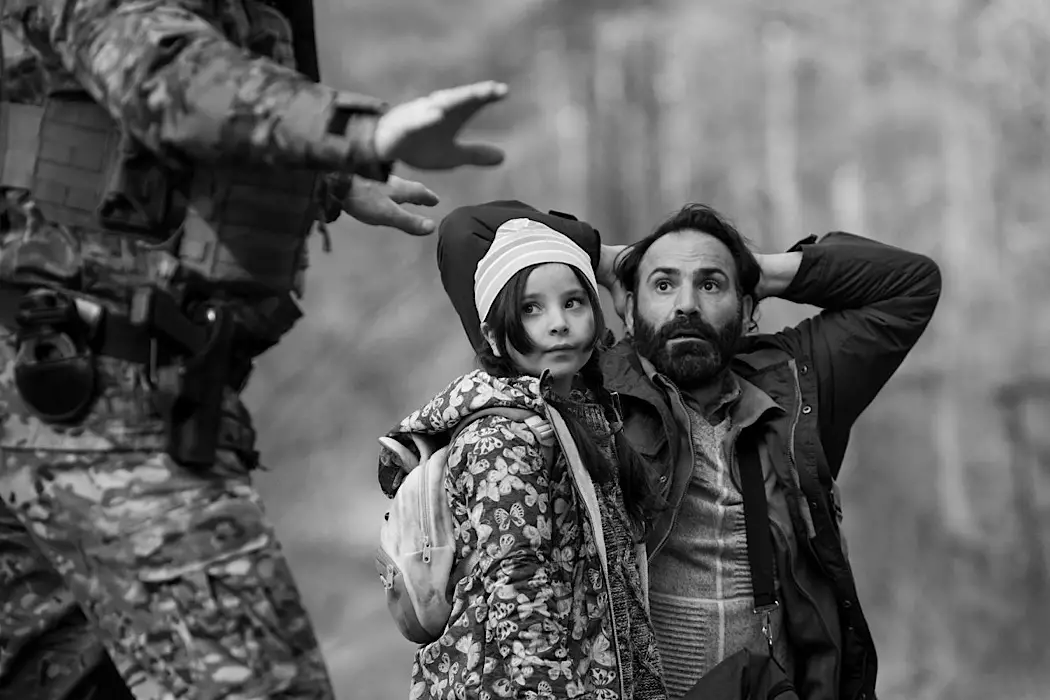
Lee Jutton has directed short films starring a killer toaster,…
The daughter of a Communist activist who was herself arrested during the Prague Spring of 1968, director Agnieszka Holland’s politics have always infused her work with a sense of righteousness and dismay. Many of her films, such as the Academy Award-nominated Holocaust dramas Europa Europa and In Darkness, seek to highlight the horrors of the past so that we might not repeat them in the future. However, Holland’s latest film is entirely of the present, and so intensely critical of the current Polish government that she has effectively burned all bridges with her native land despite being one of its most acclaimed filmmakers.
Set in 2021, Green Border is named for the vast forests and swamps that form the boundary between Belarus and Poland. Here, many refugees have found themselves trapped, tortured, and killed as they try to make their way to the supposed safety of the European Union, victims of a geopolitical crisis engineered by Belarusian President Alexander Lukashenko. Holland, working from a script co-written with Maciej Pisuk and Gabriela Łazarkiewicz-Sieczko, doesn’t shy away from showing the brutality that refugees from the Middle East and Africa are subjected to while trying to make this treacherous crossing; nor does she hesitate to highlight the racism inherent in this treatment, especially when contrasted with the warm welcome given a year later to Ukrainian refugees fleeing the war in their native land. However, the admirable intentions and undeniable bravery of the director and her collaborators in making Green Border do not mean it is an unequivocally great movie.
Trapped in No Man’s Land
Green Border is divided into four chapters, each highlighting different characters and how their lives are fated to intersect at the border crossing. The first focuses on a family (including Jalal Altawil and Mohamad Al Rashi, both Syrian refugees now living in France) fleeing Syria after being lured by Lukashenko’s bad-faith promise of an easy crossing into the European Union. Needless to say, the crossing is not as safe and simple as they thought.
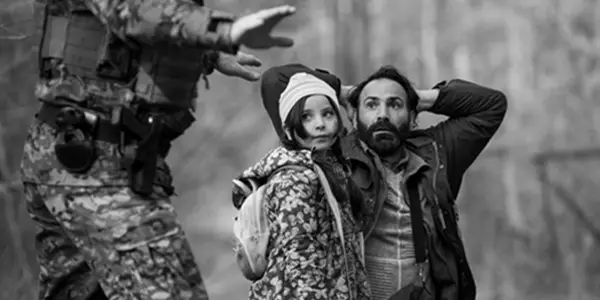
Neither Belarus nor Poland wants to take responsibility for the refugees, so as soon as they cross over into Poland, they are seized by border guards and shunted back into Belarus. Each time they try, the same thing happens, over and over in a seemingly infinite loop of dehumanization, destruction, and death. And it doesn’t even end there; dead bodies are unceremoniously dumped back and forth over the barbed wire fence by the border guards in an attempt to divert blame onto the other country.
From there, Green Border introduces us to a group of well-meaning Polish activists who sneak into the woods to provide the refugees with necessary supplies, medical care, and other assistance; however, their unwillingness to enter the border exclusion zone—if we get arrested for breaking the law, we can’t help anyone, they reason—means that they can only do so much to keep the refugees from being pushed back into Belarus. Later, we also meet one of the Polish border guards (Tomasz Włosok), a young man whose conscience is increasingly tortured by the acts of violence he commits for his country, and finally, a widowed psychiatrist named Julia (Maja Ostaszewska) whose initial indifference transforms into radical activism after she witnesses a tragedy. (Not merely an artist playing at being an activist on screen, Ostaszewska has also worked providing aid at the border in real life.)
Deserving of Dignity
One of the main problems with Green Border is that the characters most deserving of detailed and complex characterization—the refugees—are instead treated as little more than symbolic victims who seem to exist on screen solely to suffer. And suffer they do, repeatedly—beatings, drownings, being tricked into drinking water full of glass—throughout the film’s two-and-a-half-hour running time, to the point that one almost becomes numb to the brutality.

Considering that the script was written from a Polish perspective as opposed to a Middle Eastern or African one, this shallow characterization isn’t terribly surprising, but it’s definitely disappointing, especially since so many of the actors involved have stories and experiences that could and should have added much-needed depth to this side of the story. Credit must be given to Behi Djanati Atai, who plays an Afghan woman seeking asylum in Poland in the film but also works as a casting director in France and helped find many of these wonderful actors for Holland. Their performances are moving and true; I just wish they were given more robust material.
In contrast, the chapter focused on Julia devotes a great deal of time to fleshing out her past and how that motivates her in the present; as a result, it’s the more interesting one in the film, even as it does verge into white savior tropes. Still, Julia’s willingness to upend her quiet life to save lives at the border is incredibly admirable, and Ostaszewska’s empathetic performance ensures that the character’s evolution feels real rather than contrived. In an ideal world, it would inspire others to do similar work, but we do not live in an ideal world, so no doubt people will content themselves with talking about how inspirational it is instead.
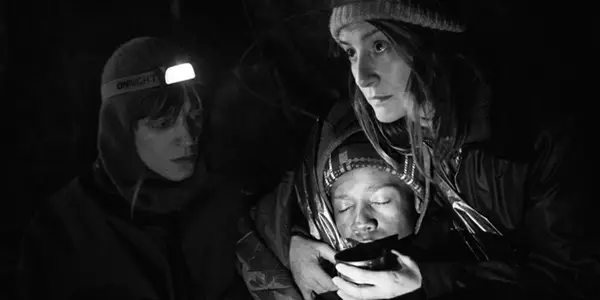
Another problem with Green Border is the film’s stark black-and-white cinematography, a creative decision designed to connect the horrors of the present with those of the past. However, in my opinion, this choice greatly backfired. In giving the film the aesthetic of the past, the filmmakers inadvertently make the events on the screen feel too removed from the present; you feel as though you are watching an old movie, not one that is chronicling events still occurring on the border between Belarus and Poland today. If it had been shot in the rich color of the real world, emphasizing the contrast between the beauty of the forest and the ugliness of what is taking place within it, it would have been so much more impactful.
Conclusion:
All these errors in execution aside, Green Border should raise international awareness of what’s happening to these refugees on the European border; for that alone, it’s an important bit of filmmaking. But importance doesn’t automatically confer greatness, and all of the film festival ovations in the world don’t necessarily equal change.
Green Border opens at Film Forum in New York on June 21 and at Laemmle Royal in Los Angeles on June 28, 2024, with national expansion to follow.
Does content like this matter to you?
Become a Member and support film journalism. Unlock access to all of Film Inquiry`s great articles. Join a community of like-minded readers who are passionate about cinema - get access to our private members Network, give back to independent filmmakers, and more.
Lee Jutton has directed short films starring a killer toaster, a killer Christmas tree, and a not-killer leopard. Her writing has appeared in publications such as Film School Rejects, Bitch: A Feminist Response to Pop Culture, Bitch Flicks, TV Fanatic, and Just Press Play. When not watching, making, or writing about films, she can usually be found on Twitter obsessing over soccer, BTS, and her cat.

